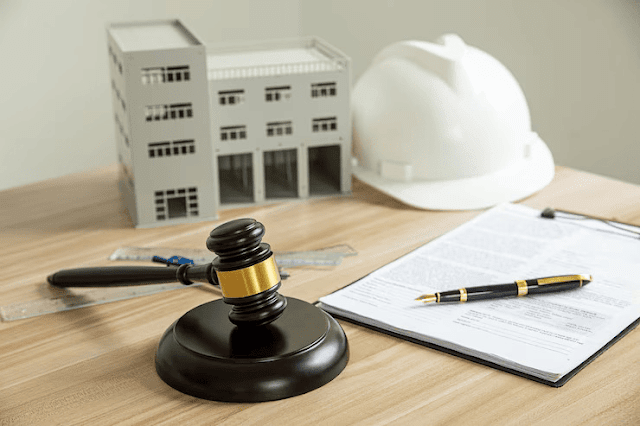Document Everything: Legal Best Practices for Builders During Construction
Building a structure, whether it’s a small home or a large commercial project, is no small feat. Builders face many challenges, including tight schedules, changing client demands, and the constant need to keep quality high. But beyond the physical and logistical hurdles, there is an important legal aspect that builders often overlook: documentation. Properly documenting every step of the construction process is one of the best ways to protect yourself legally. For builders seeking guidance, consulting a construction defect attorney early on can make a significant difference in avoiding costly disputes.
Why Documentation Matters in Construction
In the construction world, things rarely go exactly as planned. Changes in materials, weather delays, unexpected site conditions, and design adjustments happen frequently. When these changes arise, clear records can help resolve disagreements before they escalate.
Builders often underestimate how critical documentation is when it comes to legal disputes. If a client claims a construction defect or a contractor disputes payment, your well-kept records could be your strongest defense. Documentation provides proof of work done, materials used, approvals received, and communications exchanged. This clarity helps establish facts and timelines, which are crucial when addressing claims or lawsuits.
For example, if a client complains about a crack in a wall or a plumbing issue, having detailed daily logs, photos, and correspondence can show when the problem started and how it was handled. Without this, builders risk facing legal claims based solely on the client’s word, which is why many builders consult a construction defect attorney to ensure their documentation is thorough and legally sound.
What Builders Should Document
Builders need to record a variety of information during construction to cover all legal bases. Here are the key categories of documentation every builder should maintain:
1. Contracts and Agreements
Start with a clear, written contract that outlines the scope of work, materials, payment terms, timelines, and responsibilities. Make sure all changes to the contract are documented through formal change orders signed by both parties.
2. Daily Logs
Keep detailed daily logs that note weather conditions, work performed, workers present, equipment used, and any unusual occurrences. These logs can serve as unbiased records if disputes arise over delays or work quality.
3. Photographs and Videos
Visual evidence is incredibly powerful. Regularly photograph and video different stages of construction. Capture both the overall progress and specific problem areas or repairs. Date-stamped images help verify the timing of work done or defects noticed.
4. Communication Records
Save all emails, text messages, and written correspondence with clients, subcontractors, suppliers, and inspectors. These records show what was discussed, agreed upon, and requested, providing context in case of disagreements.
5. Inspection and Testing Reports
Document results from inspections and tests performed during construction, such as soil tests, concrete strength, or electrical system checks. These reports can demonstrate compliance with building codes and standards.
6. Payment Records
Track all invoices, payments received, and receipts. Document any delays or issues with payments. Having this organized can help prevent disputes related to billing or subcontractor claims.
How Documentation Helps Legally
Legal issues in construction often involve claims of defects, delays, or payment disputes. When conflicts escalate, courts and arbitrators rely heavily on documented evidence. Builders who maintain thorough records are in a stronger position to defend themselves or negotiate settlements.
For example, if a client alleges that poor workmanship caused a structural problem, your documentation can show that all work met industry standards and passed inspections. If a subcontractor claims they were not paid, your payment records can clarify what was paid and when.
In the middle of construction projects, builders in California may seek advice from a construction lawyer in California to understand state-specific regulations and legal protections. California’s construction laws can be complex, and having a lawyer review your documentation practices can help you stay compliant and reduce risk.
Tips for Effective Documentation
Here are some practical tips builders can use to keep their documentation strong and legally useful:
- Be consistent: Update logs and records daily without fail. Regular documentation prevents gaps that can weaken your case.
- Be detailed: Include specifics such as dates, times, names of people involved, and exact descriptions of work or issues.
- Use technology: Digital tools and apps designed for construction management can make documentation easier and more organized.
- Store safely: Keep both physical and digital copies of all records. Back up your digital files regularly.
- Train your team: Ensure subcontractors and workers understand the importance of documentation and cooperate in maintaining records.
When to Consult a Construction Defect Attorney
If you encounter serious construction defects or legal disputes, it’s wise to consult a construction defect attorney sooner rather than later. These attorneys specialize in construction law and understand how to evaluate your documentation, identify weaknesses, and advise on your rights and responsibilities.
A construction defect attorney can also guide you through negotiations, mediation, or litigation if necessary. Their involvement early on can help you avoid costly lawsuits or insurance claims by ensuring your documentation supports your case.
Common Legal Issues Builders Face and How Documentation Helps
Defect Claims
Clients may allege problems like water leaks, cracks, or faulty electrical work. Documentation of inspections, approvals, and repairs provides evidence to confirm whether defects exist and who is responsible.
Delay Disputes
Delays can lead to penalties or lost business. Detailed daily logs and communication records can show if delays were caused by factors outside your control, such as weather or client changes.
Payment Conflicts
Subcontractors or suppliers may claim unpaid bills. Payment receipts and contract terms protect you from these claims and help resolve disputes quickly.
Regulatory Compliance
Failing to meet local building codes can cause legal penalties or forced corrections. Inspection reports and permits prove your compliance.
Conclusion
For builders, legal challenges can arise unexpectedly during any construction project. One of the best ways to protect yourself is to document everything. From contracts and daily logs to photos and payment records, good documentation provides a clear and reliable history of the project.
If you’re working in California or anywhere else, consider consulting a construction defect attorney to review your practices and help you avoid legal pitfalls. Having a construction lawyer in California on your side ensures that you understand local laws and keep your documentation in top shape.
Remember, good documentation isn’t just a paperwork chore—it’s your strongest shield against disputes, delays, and costly legal battles. Make it a priority on every job to protect your business and build with confidence.

.png)

Comments
Post a Comment